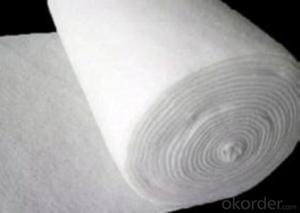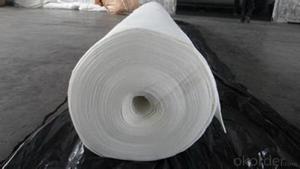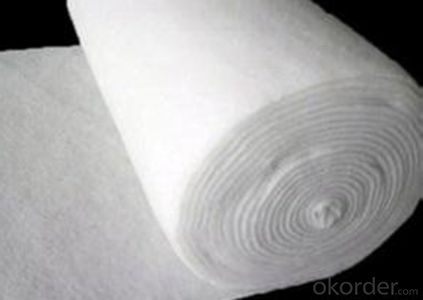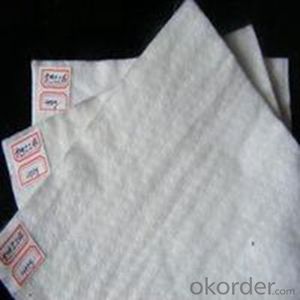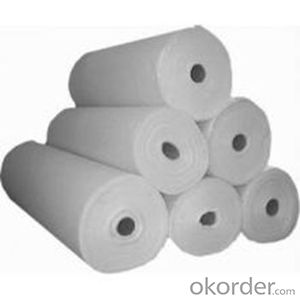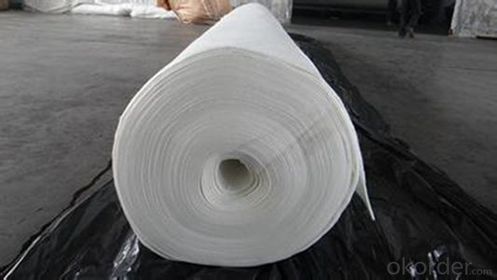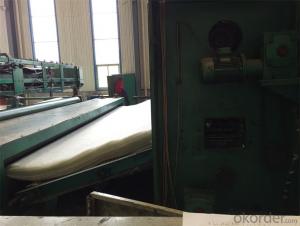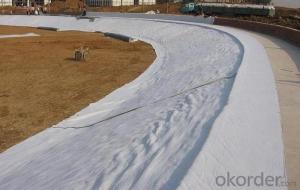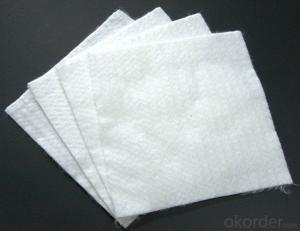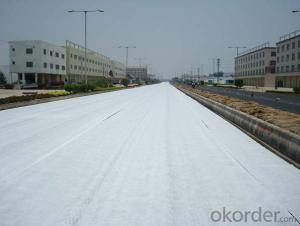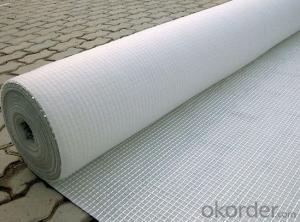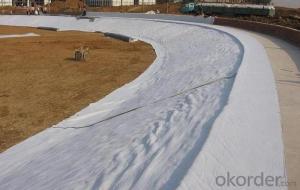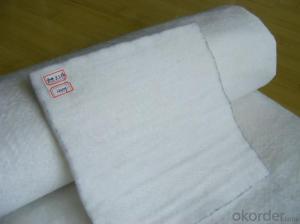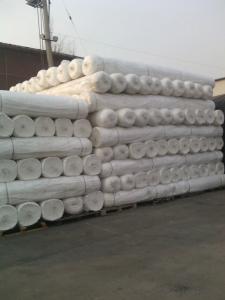Geotextile Class 1 Excellent Filament Spunbond Needle Non-Woven Geotextile
- Loading Port:
- China main port
- Payment Terms:
- TT OR LC
- Min Order Qty:
- 1000 m²
- Supply Capability:
- 500000 m²/month
OKorder Service Pledge
OKorder Financial Service
You Might Also Like
Specification
Product introduction:
| Name | Filament spunbond needle non-woven geotextile |
General Specifications | 100G/M2—800 G/M2 |
Product Description | Filament geotextile is used directly spinning air into the network (referred to as spunbond method) made by the acupuncture consolidation, product specifications from the 100-800g/m2 arbitrary choice, it is the application of geotechnical engineering and civil engineering as a geosynthetics. Because it is through the polyester filament into a network and the consolidation method of acupuncture made its fibers are arranged in three-dimensional structure, in addition to good mechanical properties, with a wide aperture range, tortuous pore distribution, excellent penetration and filtration good longitudinal and lateral extension of the drainage performance and good performance, also has a high resistance to bio-, acid and alkali, anti-aging properties of chemical stability. |
Usage | Used in irrigation, dikes, roads, railway embankments, landfill, Wai-hoi, tunnels and other municipal and infrastructure construction projects, reinforced the role of play in the project, isolation layer, filtering, drainage and so on. |
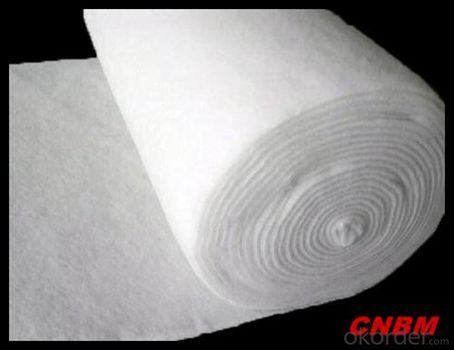
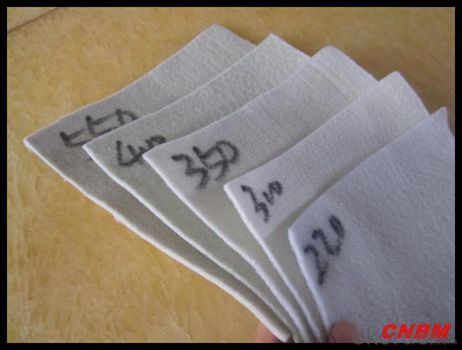
Our Service
Quality assurance
1.On a regular basis or as per your request,we entrust national testing agencies to conduct quality inspections
2. Strictly in accordance with the ISO9001-2008 international quality system standard,we monitor and manage the whole process throughout production,quality testing,and measurement to ensure product quality
3. For quality-related construction delay or substandard construction(except for damage or losses due to customer’s responsibility or irresistible natural disasters),we have refunding,replacement,and repair services.We will respond to customers’ feedbacks on quality issues within 24 hours.
After-sales service
1.In order to provide customers with comprehensive technical support,we will provide technical and other related information upon request in a timely manner.
2.In required,we will appoint specialized technicians to the construction site to give technical trainings to construction people,and offer technical guidance throughout the whole construction process.
3.For damage due to shipment and delivery,after we receive the complaint,we will check the issure through provided pictures and videos.If our responsibility is confirmed,we wil offer free replacement.
4.When the construction is completed,as your request,our technical staff may participate in the final acceptance.
Packaging & Shipping
Packing: PLASTIC FILM INSIDE, AND WOVEN BAG OUTSIDE
Shipping: About 15 days after receipt the deposit
pecifications
geotextile fabric
permeability,filtration,easy for construction
ISO and CE certificate
Good quality and competitive price
FAQ:
Q: What kind of payments does jenor support?
A: T/T, L/C, Cash are accepted.
Q: Do you charge for the samples?
A: Accordeing to our company policy, the samples are free, we only charge the freight fee. And we will return the freight fee during the next order.
Q: Can you produce according to customers' design?
A: Sure, we are professional manufacturer, OEM and ODM are both welcome.
Q: Do you have other products?
A: Yes, please check the pictures:
- Q: The difference between the construction hdpe impermeable membrane and the geotextile
- Hello, this is two different products Geotextile is not seepage, but the role of filtered water HDPE geomembrane is waterproof. Huazhi geotechnical materials manufacturers to answer your questions
- Q: Why do you want to wrap the geotextile
- Filter function, filter function, I am specializing in the production of geotechnical materials
- Q: What are the design considerations for geotextile-reinforced soil walls?
- Some of the design considerations for geotextile-reinforced soil walls include the selection of appropriate geotextile material, determining the required strength and stability of the wall, evaluating the site conditions and soil properties, considering the drainage requirements, ensuring proper connection and anchorage of the geotextile to the wall, and considering any potential environmental factors that may affect the performance of the wall.
- Q: How do geotextiles contribute to pavement performance?
- Geotextiles contribute to pavement performance by providing reinforcement, filtration, and separation functions. They enhance the structural integrity of the pavement by distributing loads and reducing the potential for cracking and rutting. Geotextiles also help in preventing the mixing of different layers of pavement materials, improving drainage, and reducing the intrusion of fine particles into the pavement layers. Overall, geotextiles improve the durability, longevity, and overall performance of pavements.
- Q: What are the advantages of using geotextiles in agriculture?
- Geotextiles offer several advantages in agriculture, including erosion control, weed suppression, moisture conservation, and improved soil condition. They prevent soil erosion by stabilizing slopes and preventing sediment runoff, ensuring the longevity of cultivated areas. Geotextiles also act as a barrier to weed growth, reducing the need for herbicides and manual weeding. Additionally, they aid in conserving moisture by reducing evaporation and maintaining soil moisture levels. Furthermore, geotextiles promote better soil structure and fertility by preventing soil compaction, improving aeration, and facilitating nutrient absorption.
- Q: Filtering geotextile calculation
- The amount of consultation and happy it
- Q: What does geotextile mean?
- Geotextile, also known as geotextile, it is made of synthetic fiber through acupuncture or woven from the permeability of geosynthetics. Geotextile is a new material geosynthetics which one, the finished product for the cloth, the general width of 4-6 meters, the length of 50-100 meters. Geotextile is divided into a spinning geotextile and non-woven filament geotextile. First, the characteristics: 1, high strength, due to the use of plastic fibers, in dry and wet state can maintain full strength and elongation. 2, corrosion-resistant, in different pH of the soil and water can be long-term corrosion resistance. 3, good water permeability between the fiber gap, it has a good water permeability. 4, good microbial resistance to micro-organisms, insects are not damaged. 5, construction convenience, as the material light, soft, so the delivery, laying, construction convenience. 6, complete specifications: width of up to 9 meters. Is currently the widest product, the unit area quality: 100-1000g / ㎡. Second, the role: 1, isolation 2, filtration 3, drainage 4, reinforced 5, protection 6, anti-puncture
- Q: What are the different geotextile installation techniques in separation?
- There are several different geotextile installation techniques used in separation, including direct placement, trench installation, and overlapping. Direct placement involves laying the geotextile directly on the ground surface, while trench installation involves placing the geotextile in a trench dug along the separation area. Overlapping is another technique, where multiple layers of geotextile are overlapped to form a continuous barrier. These installation techniques help to prevent the mixing of different soil layers and provide effective separation between different materials.
- Q: How do geotextiles compare to traditional construction materials?
- Geotextiles offer several advantages over traditional construction materials. Firstly, geotextiles are lightweight and easy to handle, making them more convenient to transport and install. Secondly, they have excellent filtration properties, allowing for effective drainage and preventing soil erosion. Additionally, geotextiles are highly durable, resistant to rot and chemicals, and can withstand harsh environmental conditions. They are also relatively cost-effective compared to traditional materials, reducing project expenses. Overall, geotextiles provide a versatile and efficient solution for various construction applications.
- Q: What are the specifications for geotextiles in wastewater treatment projects?
- The specifications for geotextiles in wastewater treatment projects typically include requirements for strength, filtration efficiency, and durability. Additionally, they may specify the type and weight of geotextile fabric to be used, as well as any necessary certifications or testing standards that need to be met. Geotextiles used in wastewater treatment projects are typically designed to provide effective filtration and separation of solids, while also being resistant to chemical degradation and capable of withstanding the harsh conditions present in wastewater treatment facilities.
Send your message to us
Geotextile Class 1 Excellent Filament Spunbond Needle Non-Woven Geotextile
- Loading Port:
- China main port
- Payment Terms:
- TT OR LC
- Min Order Qty:
- 1000 m²
- Supply Capability:
- 500000 m²/month
OKorder Service Pledge
OKorder Financial Service
Similar products
Hot products
Hot Searches
Related keywords
